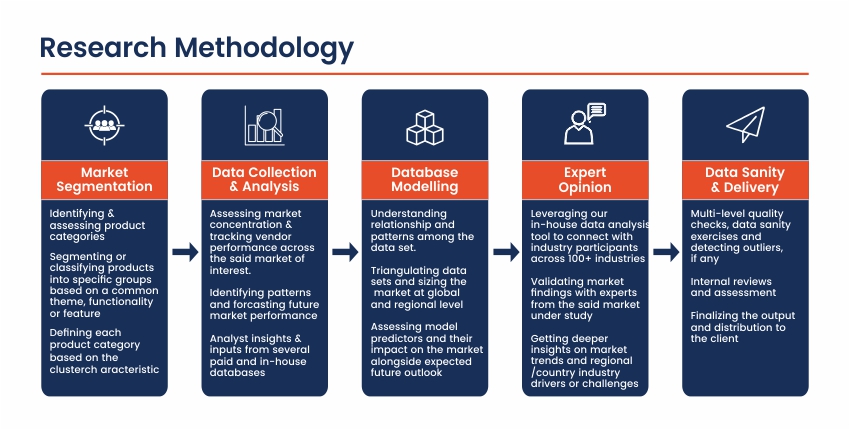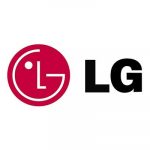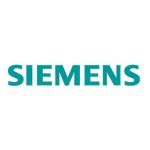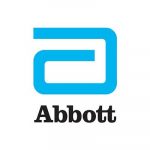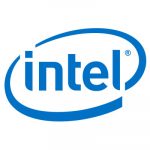Market Overview
The Middle East connected rail market is experiencing a transformative phase, driven by substantial investments from various governments in the region aimed at modernizing and expanding their rail infrastructure. This market encompasses the integration of advanced technologies such as IoT, AI, and big data analytics into rail systems to enhance operational efficiency, safety, and passenger experience. Countries like Saudi Arabia, the United Arab Emirates (UAE), and Qatar are at the forefront of this development, with ambitious projects like the Riyadh Metro, Etihad Rail, and the Doha Metro. These projects are not only set to revolutionize public transportation but also to stimulate economic growth, reduce traffic congestion, and lower carbon emissions. The Middle East’s strategic location as a global trade hub further underscores the importance of a robust and connected rail network, facilitating seamless movement of goods and people across borders.
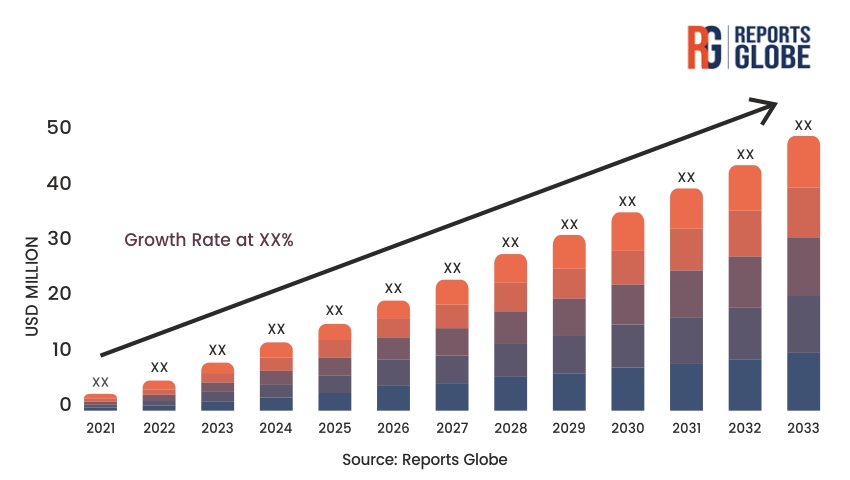
Key Takeaways of the Market
- The Middle East connected rail market is poised for significant growth due to substantial government investments.
- Integration of advanced technologies such as IoT, AI, and big data analytics is a key trend.
- Major projects like Riyadh Metro, Etihad Rail, and Doha Metro are driving market expansion.
- Improved operational efficiency, safety, and passenger experience are primary objectives.
- The strategic location of the Middle East enhances the importance of a connected rail network.
- Economic growth, reduced traffic congestion, and lower carbon emissions are expected benefits.
Market Driver
One of the primary drivers of the Middle East connected rail market is the substantial government investment aimed at economic diversification and sustainable development. Many countries in the region, particularly those in the Gulf Cooperation Council (GCC), have recognized the need to reduce their dependency on oil revenues and are investing heavily in infrastructure projects, including rail networks. For instance, Saudi Arabia’s Vision 2030 and the UAE’s Vision 2021 are ambitious initiatives that prioritize the development of modern, efficient, and connected transportation systems. These investments are not only intended to improve public transportation but also to stimulate economic growth by creating jobs, attracting foreign investment, and enhancing trade. Additionally, the adoption of advanced technologies in rail systems is driven by the need to improve operational efficiency, safety, and passenger experience. IoT, AI, and big data analytics enable real-time monitoring and predictive maintenance, reducing downtime and enhancing the overall reliability of rail services.
Market Restraint
Despite the promising growth prospects, the Middle East connected rail market faces several challenges that could hinder its expansion. One significant restraint is the high cost associated with the development and maintenance of advanced rail systems. The integration of cutting-edge technologies such as IoT, AI, and big data analytics requires substantial capital investment, which may not be feasible for all countries in the region. Additionally, the harsh climatic conditions in the Middle East, characterized by extreme heat and sandstorms, pose significant challenges to the operation and maintenance of rail systems. These conditions can lead to increased wear and tear on rail infrastructure and rolling stock, necessitating frequent maintenance and replacement. Furthermore, the region’s political instability and security concerns can also act as a deterrent to foreign investment and hinder the timely completion of rail projects. Lastly, the lack of skilled workforce and technical expertise in the region can impede the successful implementation and operation of advanced rail systems.
Market Opportunity
The Middle East connected rail market presents numerous opportunities for growth and development, driven by the region’s strategic location, economic diversification initiatives, and increasing urbanization. One significant opportunity lies in the development of cross-border rail networks that can facilitate seamless trade and transportation between countries in the region. For instance, the proposed Gulf Railway project aims to connect all six GCC countries, enhancing regional connectivity and boosting economic integration. Additionally, the adoption of smart city initiatives in various Middle Eastern countries presents opportunities for the integration of connected rail systems with other urban infrastructure, such as smart grids and intelligent transportation systems. This integration can enhance the overall efficiency and sustainability of urban environments. Moreover, the increasing focus on sustainable development and reducing carbon emissions presents opportunities for the adoption of green technologies in rail systems, such as electrification and renewable energy integration. These initiatives can not only reduce the environmental impact of rail transportation but also attract environmentally conscious investors and passengers.
Market Segment Analysis
Passenger Rail Segment
The passenger rail segment is a critical component of the Middle East connected rail market, driven by the need to provide efficient and reliable public transportation in rapidly growing urban areas. Major cities in the region, such as Riyadh, Dubai, and Doha, are experiencing significant population growth and urbanization, leading to increased demand for public transportation. The development of metro and light rail systems in these cities aims to reduce traffic congestion, improve air quality, and provide a convenient and affordable transportation option for residents and visitors. Additionally, the integration of advanced technologies in passenger rail systems, such as real-time passenger information systems, automated fare collection, and predictive maintenance, enhances the overall passenger experience and operational efficiency. For instance, the Riyadh Metro project, which is one of the largest metro projects in the world, aims to provide a state-of-the-art public transportation system that can accommodate the city’s growing population and reduce traffic congestion.
Freight Rail Segment
The freight rail segment is another crucial component of the Middle East connected rail market, driven by the region’s strategic location as a global trade hub and the need to enhance the efficiency of goods transportation. The development of freight rail networks in the region aims to facilitate the seamless movement of goods across borders, reduce transportation costs, and enhance supply chain efficiency. Major projects such as the Etihad Rail in the UAE and the Saudi Landbridge project aim to connect key industrial and logistics hubs, ports, and free zones, providing a reliable and efficient transportation option for goods. The integration of advanced technologies in freight rail systems, such as IoT-based asset tracking, automated freight handling, and predictive maintenance, enhances the overall efficiency and reliability of freight transportation. For instance, the Etihad Rail project aims to connect the UAE’s major ports and industrial zones, providing a seamless and efficient transportation option for goods and enhancing the country’s position as a global trade hub.
Regional Analysis
The Middle East connected rail market is characterized by significant regional variations, driven by differences in economic development, government policies, and infrastructure investments. The Gulf Cooperation Council (GCC) countries, particularly Saudi Arabia, the UAE, and Qatar, are at the forefront of rail development in the region, driven by ambitious economic diversification initiatives and substantial government investments. For instance, Saudi Arabia’s Vision 2030 and the UAE’s Vision 2021 prioritize the development of modern and efficient transportation systems, including connected rail networks. Major projects such as the Riyadh Metro, Etihad Rail, and Doha Metro are set to revolutionize public transportation in these countries and stimulate economic growth. In contrast, other countries in the region, such as Iraq and Syria, face significant challenges in developing their rail infrastructure due to political instability, security concerns, and limited financial resources. However, there are opportunities for regional cooperation and investment to enhance rail connectivity and facilitate economic integration across the Middle East. For instance, the proposed Gulf Railway project aims to connect all six GCC countries, enhancing regional connectivity and boosting economic integration.
Competitive Analysis
The Middle East connected rail market is highly competitive, with numerous international and regional players vying for market share. Major international companies such as Siemens, Alstom, and Bombardier are actively involved in the development and implementation of advanced rail technologies in the region. These companies bring extensive technical expertise, advanced technologies, and substantial financial resources to the market, enabling them to secure major contracts for rail projects. Additionally, regional players such as Saudi Railway Company (SAR), Etihad Rail, and Qatar Rail are also significant players in the market, driven by substantial government support and investments. These companies are responsible for the development and operation of major rail projects in the region, such as the Riyadh Metro, Etihad Rail, and Doha Metro. The competitive landscape is further characterized by strategic partnerships and collaborations between international and regional players, aimed at leveraging each other’s strengths and capabilities. For instance, Alstom and Saudi Railway Company (SAR) have partnered to provide advanced rail technologies and solutions for the Riyadh Metro project.
Key Industry Developments
- Saudi Arabia’s Vision 2030 prioritizes the development of modern and efficient transportation systems, including connected rail networks.
- The Riyadh Metro project is one of the largest metro projects in the world, aimed at providing a state-of-the-art public transportation system.
- The Etihad Rail project aims to connect the UAE’s major ports and industrial zones, enhancing the country’s position as a global trade hub.
- The proposed Gulf Railway project aims to connect all six GCC countries, enhancing regional connectivity and boosting economic integration.
- Strategic partnerships and collaborations between international and regional players are driving the development and implementation of advanced rail technologies in the region.
Future Outlook
The future outlook for the Middle East connected rail market is highly promising, driven by substantial government investments, economic diversification initiatives, and increasing urbanization. The development of modern and efficient rail networks is expected to play a crucial role in enhancing public transportation, reducing traffic congestion, and stimulating economic growth in the region. Major projects such as the Riyadh Metro, Etihad Rail, and Doha Metro are set to revolutionize public transportation and provide a convenient and affordable transportation option for residents and visitors. Additionally, the adoption of advanced technologies such as IoT, AI, and big data analytics is expected to enhance the operational efficiency, safety, and passenger experience of rail systems. Furthermore, the increasing focus on sustainable development and reducing carbon emissions presents opportunities for the adoption of green technologies in rail systems, such as electrification and renewable energy integration. Overall, the Middle East connected rail market is poised for significant growth and development in the coming years, driven by a combination of government support, technological advancements, and increasing demand for efficient and sustainable transportation solutions.
Market Segmentation
- By Type
- Passenger Rail
- Freight Rail
- By Technology
- IoT
- AI
- Big Data Analytics
- By Application
- Metro and Light Rail
- High-Speed Rail
- Freight Rail
- By Component
- Hardware
- Software
- Services
- By Country
- Saudi Arabia
- UAE
- Qatar
- Kuwait
- Bahrain
- Oman
- Others


